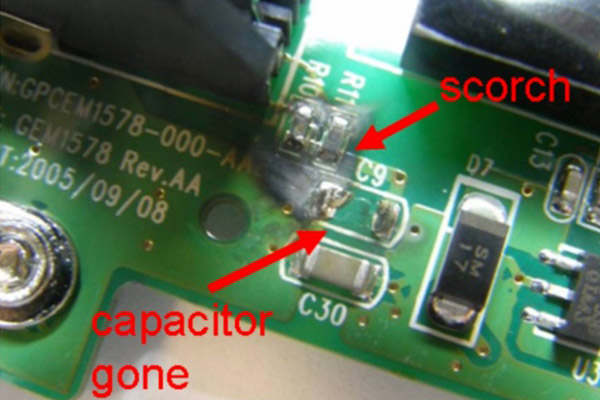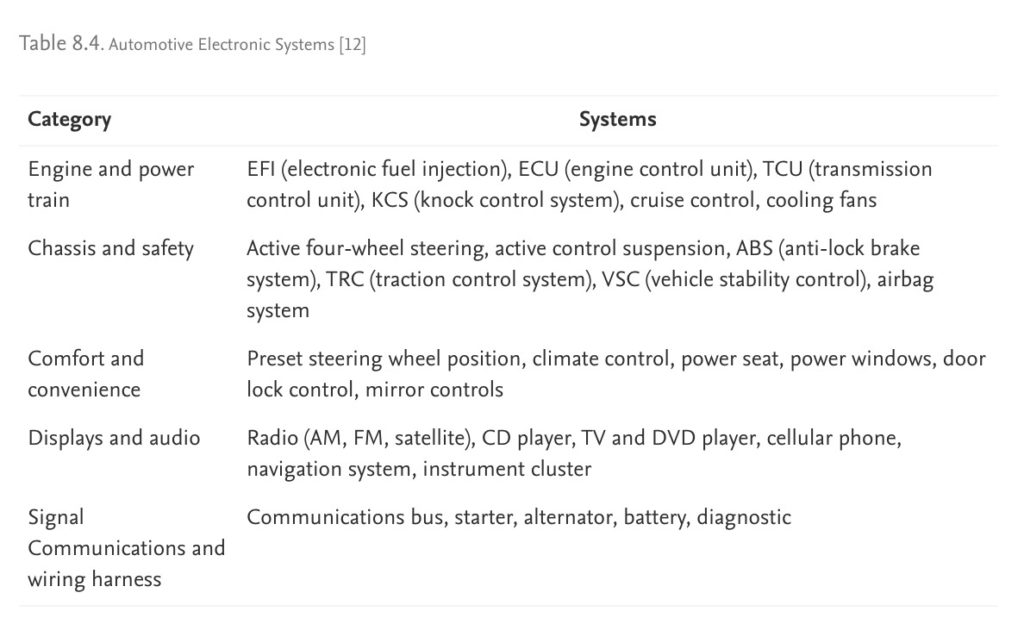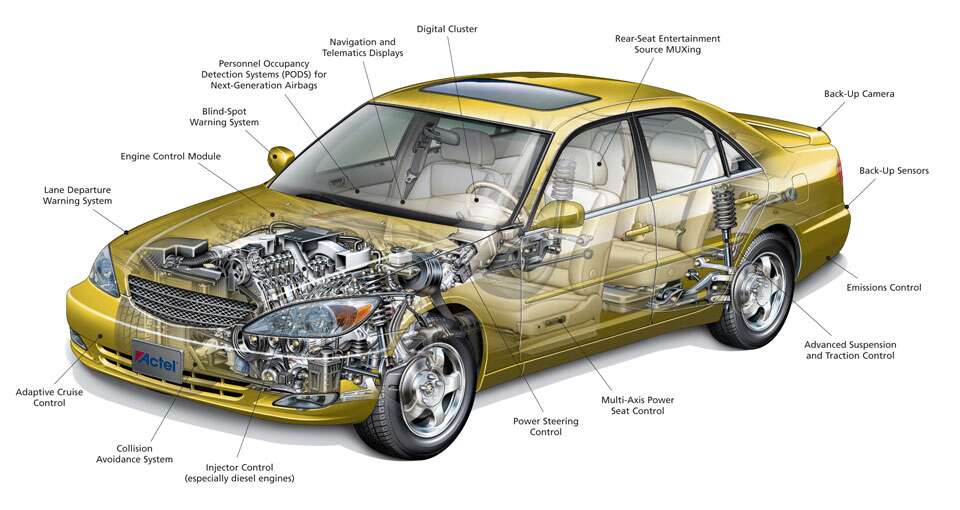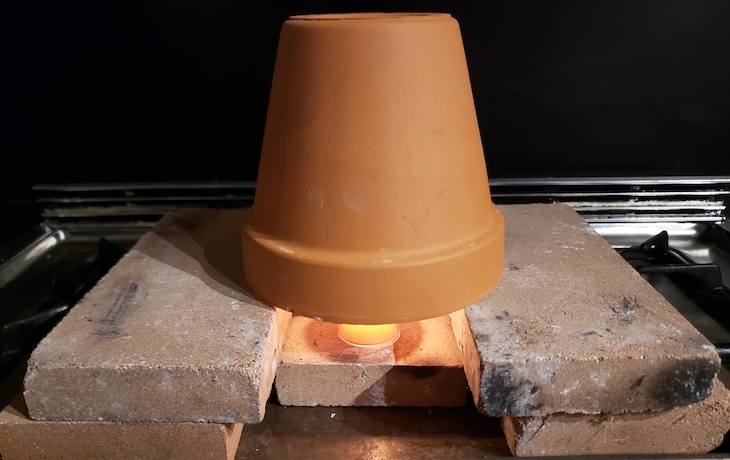William S. Forschten’s post-apocalyptic novel, One Second After, famously describes a post-apocalyptic world of clogged roadways and stranded motorists, as all the continent’s cars are instantly stopped by a single blast from a high-altitude electromagnetic pulse (HEMP). All cars, that is, except one — the protagonist’s 1959 Edsel, a car so old it didn’t have any modern electronics that could be fried by the electromagnetic pulse from a nuke.
Forschten’s Edsel is the car that launched a million prepper Google searches for “EMP-proof vehicles.” And the internet has responded with a ton of articles and products dedicated to EMP-proofing your vehicle (see the “Snake oil” section, below). But we’ve done the research and talked to the experts, and the news is mixed:
- It’s possible that many, or even most, cars will still more or less work after a HEMP. But there are many variables — most of them outside any prepper’s control — that factor into whether a specific car will work. And there’s no way to guarantee a good outcome for any vehicle short of wrapping the whole thing in a Faraday cage.
- There is no magic year, make, or model that you should buy. Roughly speaking, pre-1970 or so is better, but that’s becoming impractical 50 years on.
- An EMP-proof car that can survive outside a Faraday cage doesn’t meet the “sane prepping” criteria for a very long list of reasons we’ll get into in a moment. So unless you’ve got all your other preps squared away, and have a lot of time and money to dedicate to this obscure, complicated prep, the sane prepper case just cannot be made.
- Because an EMP-proof vehicle is not a sane prep, you should forget about the road warrior fantasies and focus on all the other preps that will actually matter in the aftermath of a major EMP disaster.
For our guide on the risks of and surviving an EMP attack, we read every important paper and commission report on EMP, and interviewed one of the authors of the most widely cited studies on the effects of EMP.
Here’s what you need to know:
An EMP damages modern electronic devices by injecting an unexpected electrical current into their circuits and overloading them. The external wires that attach to most electronic devices (i.e., data cables and power cords) act as antennas that collect the pulse’s energy and funnel it straight into fragile circuits. The longer the wire to the device, the more EMP energy that wire directs into the interior of that device where it can do damage.
The more modern the circuits in a car or device, the more sensitive they are to smaller changes in current. So as our electronics get more advanced, shorter wires can collect enough current to overload them.
HEMP is not actually a thing preppers should worry about. Or, to be more precise, a HEMP attack on the continental US is a nuclear attack, so if it happens then it’ll be in the context of a full-scale nuclear war. In such a scenario, you’ve got far more immediate problems than a dead starter.
Solar EMPs are much more likely than any kind of man-made EMP, but a solar storm can’t generate the kinds of high-frequency EMP needed to knock out small electronics like those found in cars. So the more plausible solar EMP scenario is not a direct threat to your ride. (It is, however, an indirect threat via its impact on the country’s energy infrastructure, but more on that, below.)
All of society’s detailed knowledge about which cars will likely survive a nuclear-generated, high-altitude EMP (HEMP) and which won’t, is classified by various governments. But we do know enough to give some general guidelines:
- The newer the car, the more vulnerable it is to HEMP.
- Pre-1970’s cars are best, but are probably still vulnerable, depending on various factors.
- Any car of any make/model/year needs its critical electrical parts to be protected by a metal Faraday cage for best results.
The fact that cars are made of metal does give them some limited shielding from EMP. But this spotty shielding just reduces the odds of damage by an unknown (and unknowable) degree that’s dependent on a ton of variables related to the blast and the vehicle.
Here’s a brief, incomplete list of the factors that will determine how your car responds to a HEMP:
- The size and elevation of the nuclear blast
- Geographic and seasonal variations in the earth’s magnetic field at both the location of the blast and the location of the vehicle
- The location and physical orientation of the vehicle with respect to the blast
- The amount and position of the metal parts of the car
- The number, locations, and designs of the critical electronic systems inside the car
- The length of the wires and cables attached to the vehicle’s electronics
All of the above factors and more work together to determine if a particular automobile in a particular place in the country survives an EMP of a particular size at a particular elevation.
What all of that “particular” talk in the previous sentence translates to in practical terms, is that in the wake of an EMP, my ’80s diesel farm tractor could have smoke coming out of its ignition, while your Tesla Model S parked a few states away could suffer a temporary, non-fatal glitch but remain drivable.
Why? Neither of us would be able to say with any confidence.
Even if you eliminate all the above variables in one stroke by enclosing your vehicle in a conductive Faraday cage, there’s still a high likelihood that you’re wasting your time with all this vehicular EMP-proofing. Because the main thing we know for certain about the “cars and EMP question” is this: finding a working vehicle will be among the least of your problems in a post-EMP scenario.
Actually getting around in the aftermath, and keeping your ride fueled, are much larger challenges.
Driving in the EMPocalypse
When it comes to roadways and navigation your ability to get around on public roads will depend on the number and location of dead and crashed vehicles. Note that many, probably even most, of these crashes won’t happen because every vehicle involved suddenly glitched out or died from the blast, but because traffic lights all stopped working at once (from a larger grid issue). It’s also the case that just one car suddenly dying in highway traffic can cause a massive pile-up that stretches for miles. And with no emergency services available to come clean up the mess, that pile-up will stay there indefinitely.
All of the clogged roadways mean that your daily doomsday driver has to be fully off-road capable. The requirement for serious off-road capabilities narrows your options for a viable EMP-mobile.
But as experienced off-roaders know, just owning an “off-road” vehicle doesn’t mean you’re actually prepared do real off-roading. Successful off-roading takes miles of practice, and extra gear (like special jacks and winches). Even the best off-roaders sometimes get in a bind and have to radio friends to come tow them out — not necessarily an option post-EMP, though.
Then there’s the fact that at some point in your doomsday travels you’re going to run into a blocked bridge, overpass, or other chokepoint where no amount of off-road mojo will help you. So even with a beast of an EMP off-road truck, you may not get far from home.
Even if you can get around okay off-road, the trucks that carry fuel around the country cannot. So there won’t be any fuel available, because the nation’s entire fuel distribution infrastructure — from the pipelines to the trucks to the individual stations — will be a mess. You’ll either need to rely on stored fuel, or you’ll need a working electric vehicle and a working solar power source.
Buying an EMP-proof car

Apart from boutique vehicles like the one pictured above, there is no make or model of car that’s guaranteed to be safe from EMP, and there is no gadget on the market (short of a totally sealed, car-sized Faraday cage) that will reliably protect your car from EMP.
There is also no model year range of car (e.g. 1950 or earlier) you can get that’s guaranteed to be EMP-proof. The most experts can say is that newer cars are definitely more vulnerable than older cars. And cars made in the ’60s or earlier, before the widespread automotive use of solid-state electronics (see below) are the least vulnerable of all. But no car, no matter how old, is guaranteed to survive a direct hit from an EMP. Nor is any particular car guaranteed to die instantly from an EMP blast. (Again, see the list of variables, above.)
Small electronics that have only very short external cables attached to them could be fine, depending on the makeup of the gadget and the length of the cables. So some modern cars that don’t have very long cable runs could be ok with enough luck. (The length of these runs varies make/model/year, so there’s no way to know how long the wire runs are in a car short of taking the whole thing apart and measuring the wires with a ruler.)
As for older automobiles, even very old, ’50s-era cars have wire runs and electrical components that may be vulnerable to EMP if you’re close enough to the blast. Again, luck is a big factor.
And while we’re weighing different probabilities, it could turn out that in purchasing an old car as a prep, all you’re doing is trading a moderate amount of EMP risk for an enormous amount of the ordinary maintenance risk that goes with having an antique car whose parts are all out of production.
All of the above boils down to these options:
- If you go the electric vehicle route, you’ll need to store both the entire vehicle and the solar charging equipment in a large Faraday cage.
- If you plan on using an older vehicle with no solid state electronics (i.e. anything made before the early ’70s), then you’ll need to either store the entire vehicle in a Faraday cage, or you’ll need to identify, obtain, and protect backups of all critical electrical parts. You’ll also need a large stash of fuel, and plenty of mechanical know-how for replacing fried parts.
- If you plan to use a modern vehicle with solid-state electronics, then storing backup parts in a small Faraday cage won’t be an option. You’ll need to store the entire car or truck in a large Faraday cage. And, of course, you’ll still need plenty of fuel.
- If you don’t want to do any of the above, it’s actually not at all unreasonable to just gamble that either your car will make it through the blast, or you’ll have a friend or a neighbor whose car makes it through. This is a fairly reasonable bet, and in fact, is probably the best “sane prepper” option.
Why cars are vulnerable to EMP
Solid-state electronics — i.e., electronics based on semiconductors, like computer chips and transistors — are extremely vulnerable to nuclear EMP under the right conditions. These devices are low-voltage and can’t take sudden infusions of electrical energy. So the current spikes created when a high-frequency EMP hits the wires attached to a solid-state device are often enough to burn it out.

All mass-market consumer vehicles in production for the past few decades have solid-state electronics in them in one form or another — the newer the car, the more critical those electronics are to its functioning. This 1972 Popular Electronics article outlines the many areas that solid-state electronics were being used in cars even then — critical areas like braking and fuel injection were already in the process of going solid state.

Even very old cars without solid-state circuits could still see the electrical parts of their systems fried by an EMP if they’re close enough to the blast. Anything that has enough external wire attached to it could be vulnerable.
Preppers who keep very old cars around for EMP resilience purposes also keep backup alternators, generators, ignition coils, and other parts in a Faraday cage. That way, they’re prepared to replace those parts in the wake of a blast.
Beware EMP snake oil and fake news
If you’ve spent any time on this topic, you’ve run across some links telling you that the EMP Commission tested some cars in 2004, and they mostly came through it just fine. Or you read about a TV show that ran a car through an EMP generator, and it shut down but then cranked back up. All that stuff is fake news. Do not believe it.
The EMP Commission had to return the borrowed cars in working order, so they didn’t even try to test them to the point of frying any electronics. The tests they ran were just not representative of a real-world EMP strike.
And the TV show? That whole “test” was staged, and the producers admitted it. So that fake incident is not to be relied on no matter how many mainstream websites are citing it as real.
Preppers who’ve gone deeper down the “EMP and cars” rabbit hole will know about Russian and US high-altitude nuclear tests done in the ’60s, and how some cars at the time survived. The Russians did some later testing over Kazakhstan with nuclear detonation and EMP. The results of these tests are all still classified, and what has filtered out to the public are verbal, anecdotal reports. Experts differ greatly on the implications of these tests for modern cars — many think these tests show the impact on older cars should be minimal, but others strongly dispute that these anecdotes from the ’60s tell us anything useful.
If you want to make your preparedness plans based on 60-year-old anecdotes about classified military experiments, then be our guest. But sane prepping is about relying on up-to-date information to draw reasonable inferences and to plan for the worst while hoping for the best. So this rules out making plans based on old stories, unrealistic tests, and staged-for-TV stunts.
EMP tests on cars have been done, but the results aren’t public
Both the US military and automobile manufacturers are known to have run EMP tests on automobiles. But none of these tests are available to the public.
For the military tests, the information is classified in part because the tests are based on classified knowledge of the nuclear capabilities of us and our enemies, and of the kinds of pulses their weapons would produce. The fact that it’s also used to harden our own military equipment against EMP is another reason for the secrecy.
Auto manufacturer tests are done primarily for reasons of ensuring that modern cars’ many electronic components don’t interfere with each other. It’s not clear why the automakers would be testing for actual HEMP resilience, apart from perhaps a specific military request for info on certain models. So it’s unlikely that any but a very few vehicles are tested for anything behind ordinary electrical interference and crosstalk.
It’s also the case that different makes, models, and years of cars are configured differently on the inside. Different electronic parts from different makers are arranged in different ways. This under-the-hood variation is wide enough that it’s impossible to make blanket statements about one family of cars or another.
All of that said, we really don’t need access to highly classified information to know that any relatively modern car that’s caught in the E1 pulse of a nuke has the potential to get damaged. In a 2018 interview, I asked this question about classification and EMP effects on electronics to John Kappenmann, one of the principal researchers behind the in-depth, government-sponsored METATECH reports that are cited by everyone who looks at this topic. Here’s his response:
Silicon-based electronics do not fail gracefully. They’re very brittle. They spark over, and you’re in the process of buying new equipment to get it back up and running. That’s a huge problem, and you face this across electronic systems throughout the power grid enterprise — substations are no different than many of the power plants. They have a bit higher withstand capability, mainly because they’re switching high-voltage equipment at those locations. But the threat field is substantially larger than the inherent withstand of any of those devices.
So you really can’t engineer these systems to be resilient to 50K volts/meter. Rather, what you have to do is put them in a protected space that will not allow them to experience that 50k volts/meter threat. You keep it walled off, or Faraday cage isolated from the environment.
That’s a fairly simple concept, and it doesn’t take a lot of access to highly classified information to figure this out.
Kappenmann was talking about the embedded systems used in electrical substations, but this applies to automobiles. The embedded systems used in some industrial applications are similar to those used in vehicles — the chips and many other components are made in the same plants.
So if a programmable logic controller in an electrical substation is at risk from an E1 pulse, you can bet that your car’s fuel injection, braking, and other critical systems are all every bit as vulnerable. Again, it all depends on the length of the wire runs attached to those devices, their proximity to the blast, their level of shielding, and dozens of other factors.
Options for EMP proofing your car

If you still want to EMP-proof your car, you have one option that’s guaranteed to work: the Faraday cage.
If your car is regularly used, then wrapping it in a metal fabric is probably not an option. In this case, you’d want a metal garage where all the openings can be sealed tight, including the floor of the garage. This way, you can park your vehicle in a Faraday cage and seal it in, knowing that it’ll survive whatever hits it.

Here’s what is not a real option for EMP-proofing your car: certain gadgets that are advertised online as a one-stop, easy-to-install EMP shielding solution. To the extent that these gadgets work at all, they act as surge protectors that can protect some parts of a vehicle from the lightning-like E2 pulse of a nuke.
But the shorter, earlier E1 pulse is where the real threat to solid-state circuitry is. The E1 pulse can create currents in wires that don’t feed directly into the surge protection device (which is typically plugged into the battery). For instance, data cables could get a current injected into them, and those cables are not part of the power system that’s being surge protected. So excess charge could make its way into the electronic components via the data ports and disrupt it.
So no matter how many supposed military specifications these devices tout, or what credentials they claim to offer, smart preppers will stay away.
Sources and further reading:
Source link: https://theprepared.com/blog/cars-and-emps/ by Jon Stokes at theprepared.com











